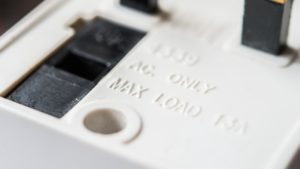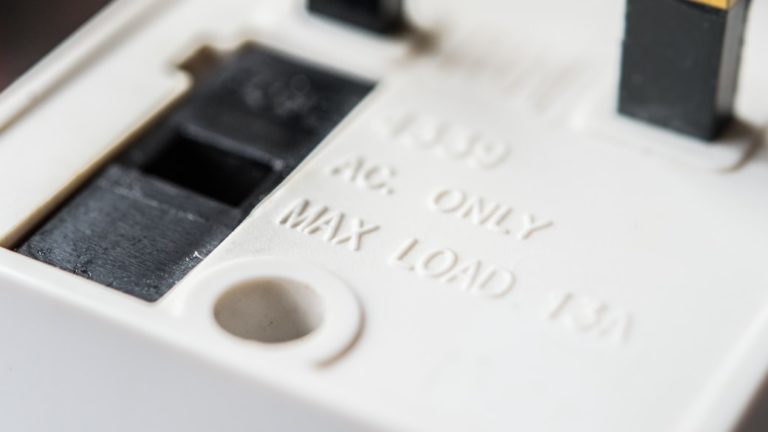In this blog, Physics tutor Chris provides some great tips on choosing your Physics IA title. Focusing on research methodology (rather than an impossible topic) and choosing a study that interests you will help you on your way. Chris sets out some IA ideas for inspiration.
Faced with the question, 'What would you choose for your IA title?', you can be forgiven for feeling overwhelmed. There are so many topics to study and so much choice. And we don't need to be swamped with work when there is so much else to do to secure good grades across the whole of the IB programme.
When I started looking to choose a topic, I was given some good advice.
- Your objective is to pass, not to hit a home run. Your project should be something that will teach you how to research a topic. Worry about earning the Nobel prize later on.
- Crucially, pick a topic that interests you to the point where you will stick to it. It is easy to get excited by a new topic, but the first obstacle in the process can make life painful.
The second point rings home to me. As I look back at a long life in the industry, I can well remember the excitement as we embarked on a new project. We made various design decisions at the start that would seem to put us on a good trajectory for success, but, inevitably, we would hit a roadblock or a set back. At that point, my overwhelming thought was to go back to the start and rethink the project, but of course, unless the block is catastrophic you have to push forward because the budget is limited (fixed) and the delivery date is fast approaching. In fact, it is a good discipline to keep going and find innovative solutions, and the IA can help you learn these disciplines.
The topic should not be trivial, but it should not be so overly large and complex that you will never complete it. You need to find something that inspires you and can be tackled in the time available. Now is not the time to be building a fission reactor in the school squash courts, but maybe finding the half life of one of the radioactive sources is.
A quick Google will yield a list of some 300 topics, so beware.
Here are some I came up with:
Why does cling wrapping cling?
You will need to measure some parameters of the film. You should notice that it will pick up small pieces of paper, so we are dealing with Static electricity. Oddly, when plastics were first developed, a very thin conductive substance was added to the process to conduct the static electricity away. One day someone realised that the clinginess of the plastic was a potential benefit - and cling film was born. It was cheaper to make - no special layer had to be added- but it could be sold for more!
The pitch of xylophone bars of different materials
You will need to analyse what determines the pitch of a xylophone bar, or indeed any object that you might hit. You could build identically sized bars of different materials and measure the frequency of the note, or you could try to tune bars of different materials to the same note/ frequency. The trick here is that the resonant frequency of an object depends on its dimensions, but also on the speed of sound in that material. Denser objects will have a higher speed of sound than less dense objects, and so the pitch will vary for identically sized objects of different densities.
What is the range limit for a string telephone?
This sounds fun to try. What do we need to look at? If the volume at the receiver does not drop to zero in the classroom, we may not be able to find a long enough piece of string to directly answer the question. Next step is to try the rugby pitch! But if we can measure the volume of the received sound at different distances, we can plot a graph of the attenuation of the sound. We will need to control the volume of the input and be able to measure the volume of the output. Both of these objectives can be achieved today with a couple of smartphones.
Humidity and the speed of sound in air
First up we will need a method to measure the speed of sound. There are many ways to do this, but a good method is to use two microphones a measured distance apart, and attach them to two channels of an oscilloscope. The distance divided by the measured time difference between the peaks of the signal gives us the speed. If we can arrange for an enclosed tube between the microphones, we can then control the temperature and humidity on the tube and see how the speed varies. An extension to the experiment would be to use a pump to see how air pressure varies the speed of sound as well.
The speed of sound in salt and fresh water
As above, but with waterproof microphones.
An efficient thermopile
What is a thermopile, and what is the effect? This is an interesting phenomenon and is being used to this day by Nasa to power the Voyager spacecraft and the Curiosity rover on Mars, to name two examples. It is also mentioned in the film/book 'The Martian' by Andy Weir. Basically, two different metals are bound together, as simple as connecting 2 pieces of copper wire onto a piece of stainless steel wire and applying heat to one of the junctions. The voltage produced is very small, but if you connect many in series you can get more voltage. Using a voltmeter and an ammeter you can measure how much voltage and how much current for a given temperature. Or more importantly the temperature difference between the two junctions. You can measure various changes in current against different conditions. it certainly would be worth finding out if more heat does generate more voltage and/ or current, or if you reach a peak. Mechanically you can also investigate how to keep the cool junction cool, to maintain the temperature difference. You could also measure how much heat energy is being radiated, and therefore lost.
Jacob's Ladder
This is a fun experiment to build and watch, but health and safety need to be considered as the voltage is very high. In nearly all the original horror movies of the 1950's there was always a mandatory Jacob's ladder operating in the mad professors lab. Why was never really explained, but as Frankenstein's monster was usually brought to life by static electricity (lightning), it was potentially useful. The idea is to get a spark between two wires, which at room temperature and pressure and a gap of 1 cm requires at least 30,000Volts. The created spark heats and ionises the air, and the hot ions rise, allowing the spark to now jump a wider gap. So it is fun to see how high and far you can get the spark to jump once the ladder has started. There are lots of opportunities to experiment and control the temperature and pressure and humidity of the air between the sides of the ladder. It will make a big difference if you can control the flow of air in the room. The more the ladder is shielded from air currents, the better it will work.
Vibration in a wire carrying AC electricity
This is an interesting topic as we can use it to show understanding of electricity, currents, induced magnetic fields, resonance and simple harmonic motion and sound. In fact the experiment is basically to build a very simple loudspeaker, because the wire will vibrate at the frequency of the AC current passing through it - be it a sine wave or an amplified MP3 file.
Here are some other topic suggestions that you can research yourself:
• Negative resistance phenomena
• Practical uses of the Hall effect
• Eddy current heating
• Paramagnetism
• Rainbows
• Schlieren photography
• Moiré fringes as measuring devices
• Triboluminescence
• Phosphenes
• Holography
• Producing a hologram
• Thin-film interference
• Kaleidoscopes
• Anamorphic art
• Tyndall figures
• Tyndall scattering and the sunset
• The Geissler tube
• A Wilson cloud chamber
• Celt stones
• Skipping stones
• The Marangoni effect
• Leidenfrost phenomena
• Lichtenberg figures
• Fraunhofer patterns
• The effect of cooling fins
• Maxwell's spot
• Kanizsa figures
• The McCollough effect
• The Pockels effect: or Pockels electro-optic effect, produces double refraction in certain
crystals when a constant or varying electric field is applied.



Dear all I need urgent help finding a physics IA idea, so if there is anyone who can help me it would be appreciated. I like motion magnetism and waves and any ideas regarding this would be good.
Dear Mamnun
Many thanks for reading!
We would love to help you find a tutor to help you with the concepts behind your Physics IA. For us to do so, we would just need some further details. You can provide these by visiting this link:
https://owltutors.co.uk/contact-us/
We have a number of excellent IB Physics teachers who would be happy to help.
Best wishes
Owl Tutors